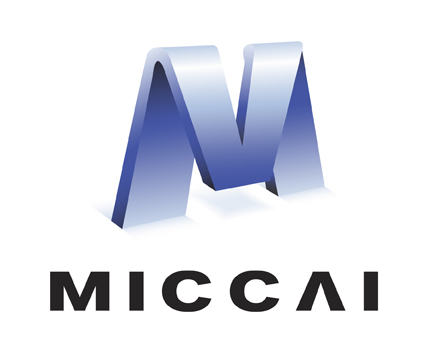Abstract
Automatic segmentation of lesions in head CT provides key information for patient management, prognosis and disease monitoring. Despite its clinical importance, method development has mostly focused on multi-parametric MRI. Analysis of the brain in CT is challenging due to limited soft tissue contrast and its mono-modal nature. We study the under-explored problem of fine-grained CT segmentation of multiple lesion types (core, blood, oedema) in traumatic brain injury (TBI). We observe that preprocessing and data augmentation choices greatly impact the segmentation accuracy of a neural network, yet these factors are rarely thoroughly assessed in prior work. We design an empirical study that extensively evaluates the impact of different data preprocessing and augmentation methods. We show that these choices can have an impact of up to 18% DSC. We conclude that resampling to isotropic resolution yields improved performance, skull-stripping can be replaced by using the right intensity window, and affine-to-atlas registration is not necessary if we use sufficient spatial augmentation. Since both skull-stripping and affine-to-atlas registration are susceptible to failure, we recommend their alternatives to be used in practice. We believe this is the first work to report results for fine-grained multi-class segmentation of TBI in CT. Our findings may inform further research in this under-explored yet clinically important task of automatic head CT lesion segmentation.
Access this chapter
Tax calculation will be finalised at checkout
Purchases are for personal use only
Similar content being viewed by others
Notes
- 1.
For the experiments with \(1\times 1 \times 4\) resolution, we turn some of the isotropic kernels into anisotropic \(3\times 3 \times 1\) kernels in order to obtain approximately the same receptive field as in the experiments with isotropic resolution. This did not affect the performance.
References
Menon, D.K., Schwab, K., Wright, D.W., Maas, A.I.: Position statement: definition of traumatic brain injury (2010)
Maas, A.I.R., Menon, D.K., Adelson, P.D., et al.: Traumatic brain injury: integrated approaches to improve prevention, clinical care, and research. Lancet Neurol. 16, 987–1048 (2017)
Coles, J.P.: Imaging after brain injury. BJA 99, 49–60 (2007)
Rao, A., Ledig, C.: Contusion segmentation from subjects with Traumatic Brain Injury: a random forest framework. In: ISBI (2014)
Kamnitsas, K., et al.: Efficient multi-scale 3D CNN with fully connected CRF for accurate brain lesion segmentation. MIA 36, 61–78 (2017)
Chan, T.: Computer aided detection of small acute intracranial hemorrhage on computer tomography of brain. CMIG 31, 285–298 (2007)
Arbabshirani, M.R., et al.: Advanced machine learning in action: identification of intracranial hemorrhage on computed tomography scans of the head with clinical workflow integration. NPJ Digit. Med. 1, 1–7 (2018)
Koikkalainen, J.R., Lötjönen, J.M.P., Ledig, C., Rueckert, D., Tenovuo, O.S., Menon, D.K.: Automatic quantification of CT images for traumatic brain injury. In: ISBI (2014)
Chilamkurthy, S., et al.: Deep learning algorithms for detection of critical findings in head Ct scans: a retrospective study. Lancet 392, 2388–2396 (2018)
Liao, C.-C., Xiao, F., Wong, J.-M., Chiang, I.-J.: Computer-aided diagnosis of intracranial hematoma with brain deformation on computed tomography. CMIG 34, 563–571 (2010)
Prakash, K.N.B., Zhou, S., Morgan, T.C., Hanley, D.F., Nowinski, W.L.: Segmentation and quantification of intra-ventricular/cerebral hemorrhage in CT scans by modified distance regularized level set evolution technique. IJCARS 7, 785–798 (2012). https://doi.org/10.1007/s11548-012-0670-0
Jain, S., et al.: Automatic quantification of computed tomography features in acute traumatic brain injury. J. Neurotrauma 36, 1794–1803 (2019)
LeCun, Y., et al.: Backpropagation applied to handwritten zip code recognition. Neural Comput. 1, 541–551 (1989)
Litjens, G., et al.: A survey on deep learning in medical image analysis. MIA 42, 60–88 (2017)
Hornik, K.: Approximation capabilities of multilayer feedforward networks. Neural Netw. 4, 251–257 (1991)
Jo, J., Bengio, Y.: Measuring the tendency of CNNs to learn surface statistical regularities, arXiv preprint (2017)
Joshi, S., Davis, B., Jomier, M., Gerig, G.: Unbiased diffeomorphic atlas construction for computational anatomy. NeuroImage 23, S151–S160 (2004)
Caselles, V., Kimmel, R., Sapiro, G.: Geodesic active contours. IJCV 22, 61–79 (1997). https://doi.org/10.1023/A:1007979827043
Kamnitsas, K., et al.: DeepMedic for brain tumor segmentation. In: Crimi, A., Menze, B., Maier, O., Reyes, M., Winzeck, S., Handels, H. (eds.) BrainLes 2016. LNCS, vol. 10154, pp. 138–149. Springer, Cham (2016). https://doi.org/10.1007/978-3-319-55524-9_14
Ronneberger, O., Fischer, P., Brox, T.: U-Net: convolutional networks for biomedical image segmentation. In: Navab, N., Hornegger, J., Wells, W.M., Frangi, A.F. (eds.) MICCAI 2015. LNCS, vol. 9351, pp. 234–241. Springer, Cham (2015). https://doi.org/10.1007/978-3-319-24574-4_28
Acknowledgments
This work is partially funded by a European Union FP7 grant (CENTER-TBI; Agreement No: 60215) and by the European Research Council (ERC) under the European Union’s Horizon 2020 research and innovation programme (Agreement No: 757173, project MIRA, ERC-2017-STG). EF is supported by the AXA Research Fund and UNL (CAID-50220140100084LI). KK is supported by the President’s PhD Scholarship of Imperial College London. VFJN is supported by a Health Foundation/Academy of Medical Sciences Clinician Scientist Fellowship. DKM is supported by funding from the National Institute for Health Research (NIHR) through a Senior Investigator award and the Cambridge Biomedical Research Centre at the Cambridge University Hospitals National Health Service (NHS) Foundation Trust. The views expressed are those of the authors and not necessarily those of the NHS, the NIHR, or the Department of Health and Social Care.
Author information
Authors and Affiliations
Corresponding author
Editor information
Editors and Affiliations
Rights and permissions
Copyright information
© 2020 Springer Nature Switzerland AG
About this paper
Cite this paper
Monteiro, M. et al. (2020). TBI Lesion Segmentation in Head CT: Impact of Preprocessing and Data Augmentation. In: Crimi, A., Bakas, S. (eds) Brainlesion: Glioma, Multiple Sclerosis, Stroke and Traumatic Brain Injuries. BrainLes 2019. Lecture Notes in Computer Science(), vol 11992. Springer, Cham. https://doi.org/10.1007/978-3-030-46640-4_2
Download citation
DOI: https://doi.org/10.1007/978-3-030-46640-4_2
Published:
Publisher Name: Springer, Cham
Print ISBN: 978-3-030-46639-8
Online ISBN: 978-3-030-46640-4
eBook Packages: Computer ScienceComputer Science (R0)



